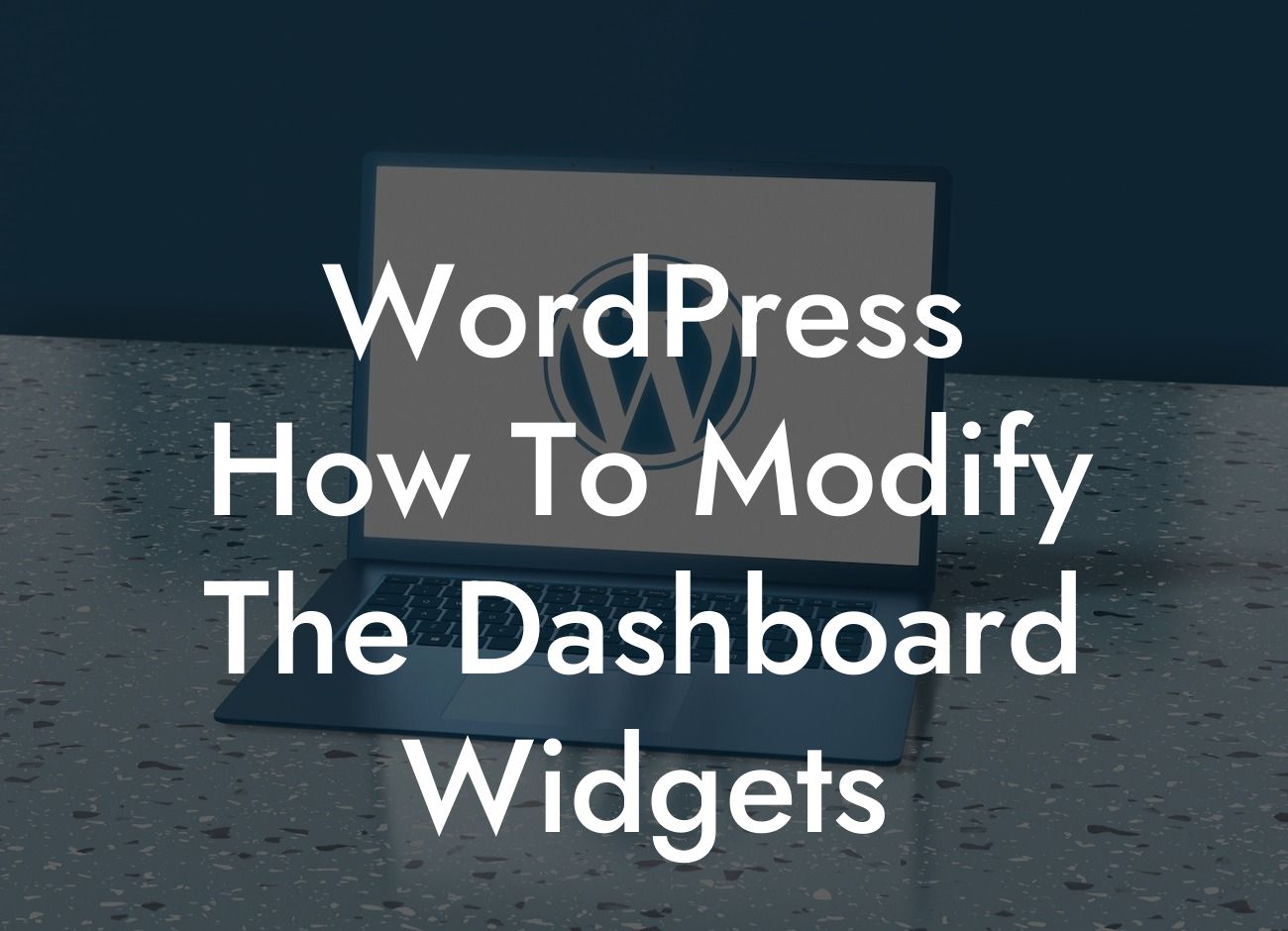Did you know that your WordPress dashboard can be customized to suit your specific needs as a small business owner or entrepreneur? By modifying the dashboard widgets, you can significantly enhance your workflow and access important information at a glance. In this guide, we'll show you step-by-step how to modify the dashboard widgets in WordPress, empowering you to supercharge your online presence and achieve extraordinary results.
Widgets play an essential role in providing you with quick access to crucial information in your WordPress dashboard. However, the default set of widgets might not always align with your unique requirements. That's where customization comes into play.
To modify the dashboard widgets, follow these straightforward steps:
1. Login to your WordPress dashboard and navigate to the "Appearance" tab.
2. From the drop-down menu, select "Widgets."
Looking For a Custom QuickBook Integration?
3. On the Widgets page, you'll find a list of available widgets on the left-hand side and the areas where you can place them on the right-hand side.
4. To remove a widget, simply drag it from the active areas to the "Available Widgets" section.
5. To add a new widget, select a widget from the "Available Widgets" section and drag it to the desired area on the right-hand side.
6. Once you've made the necessary modifications, click the "Save" button to apply the changes.
By rearranging and adding widgets that are relevant to your business or entrepreneurial journey, you can streamline your workflow and access the information you need without distractions. Want to display your website's analytics, recent comments, or upcoming events? The power is in your hands.
Wordpress How To Modify The Dashboard Widgets Example:
Imagine you own an online store and want to keep a close eye on your sales and inventory. By modifying the dashboard widgets, you can add a sales graph widget that displays your daily, weekly, or monthly revenue trends. Additionally, you can incorporate an inventory tracker widget to monitor the number of products you have in stock. With these customized widgets, you can make data-driven decisions, identify trends, and ensure your business is always on track.
Congratulations! You've learned how to modify the dashboard widgets in WordPress to tailor your experience as a small business owner or entrepreneur. By harnessing the customization options available, you can elevate your online presence, enhance your workflow, and achieve extraordinary success. At DamnWoo, we believe in empowering small businesses and entrepreneurs like you. Discover more guides, tips, and tricks on our website, and don't forget to explore our awesome WordPress plugins that can further transform your online journey. Share this article with your peers and let them in on the secret to maximizing their WordPress dashboard's potential. Together, we can create extraordinary online experiences for small businesses and entrepreneurs.













